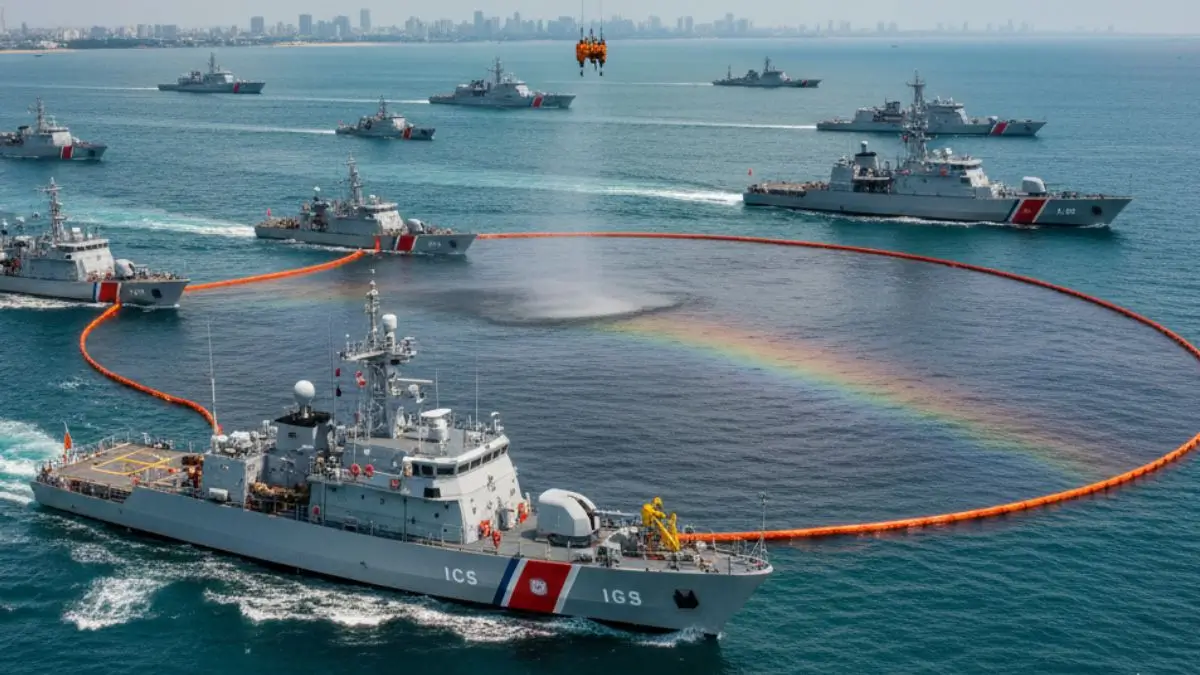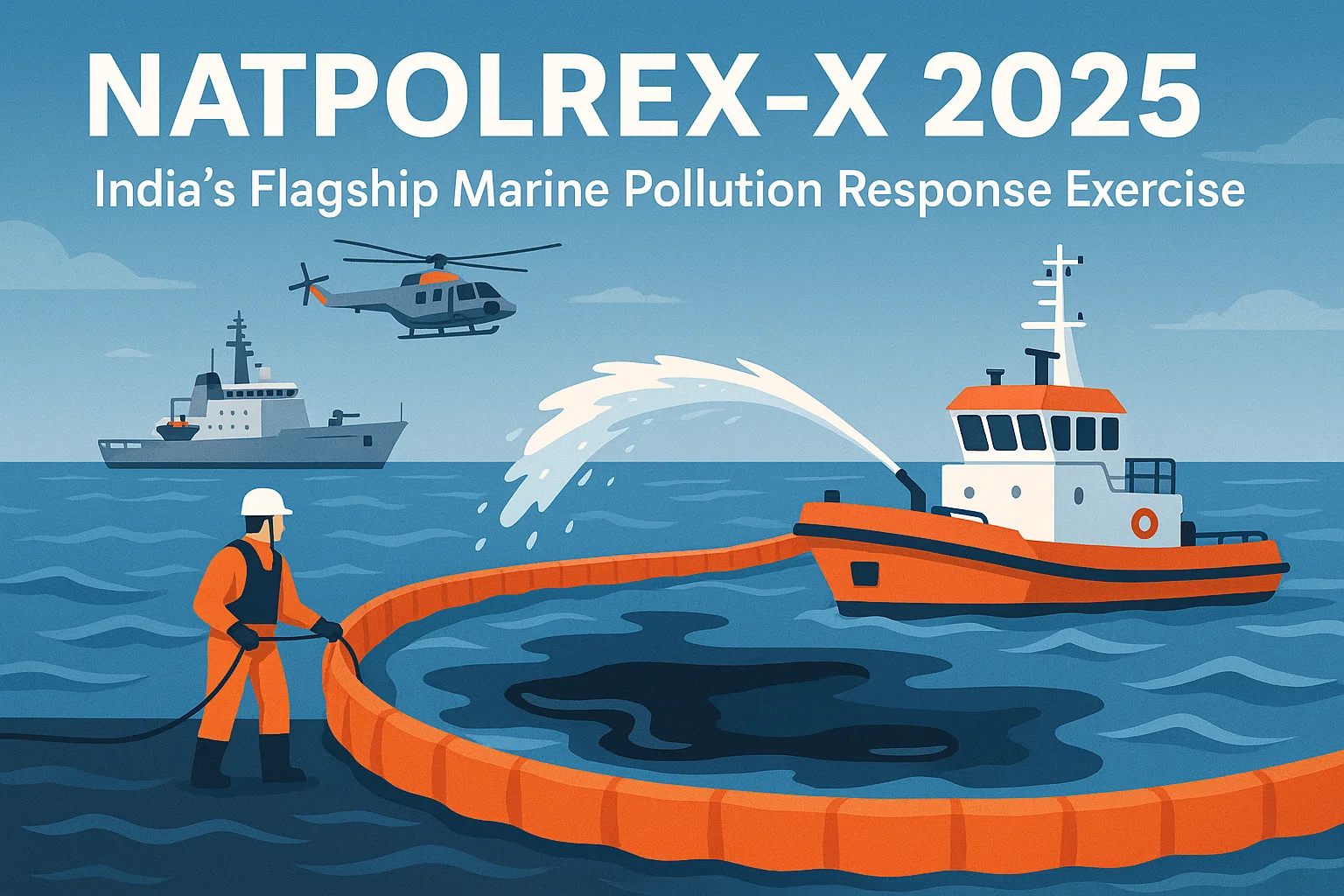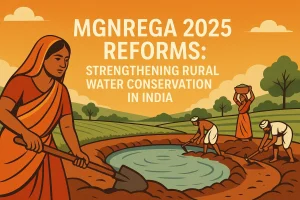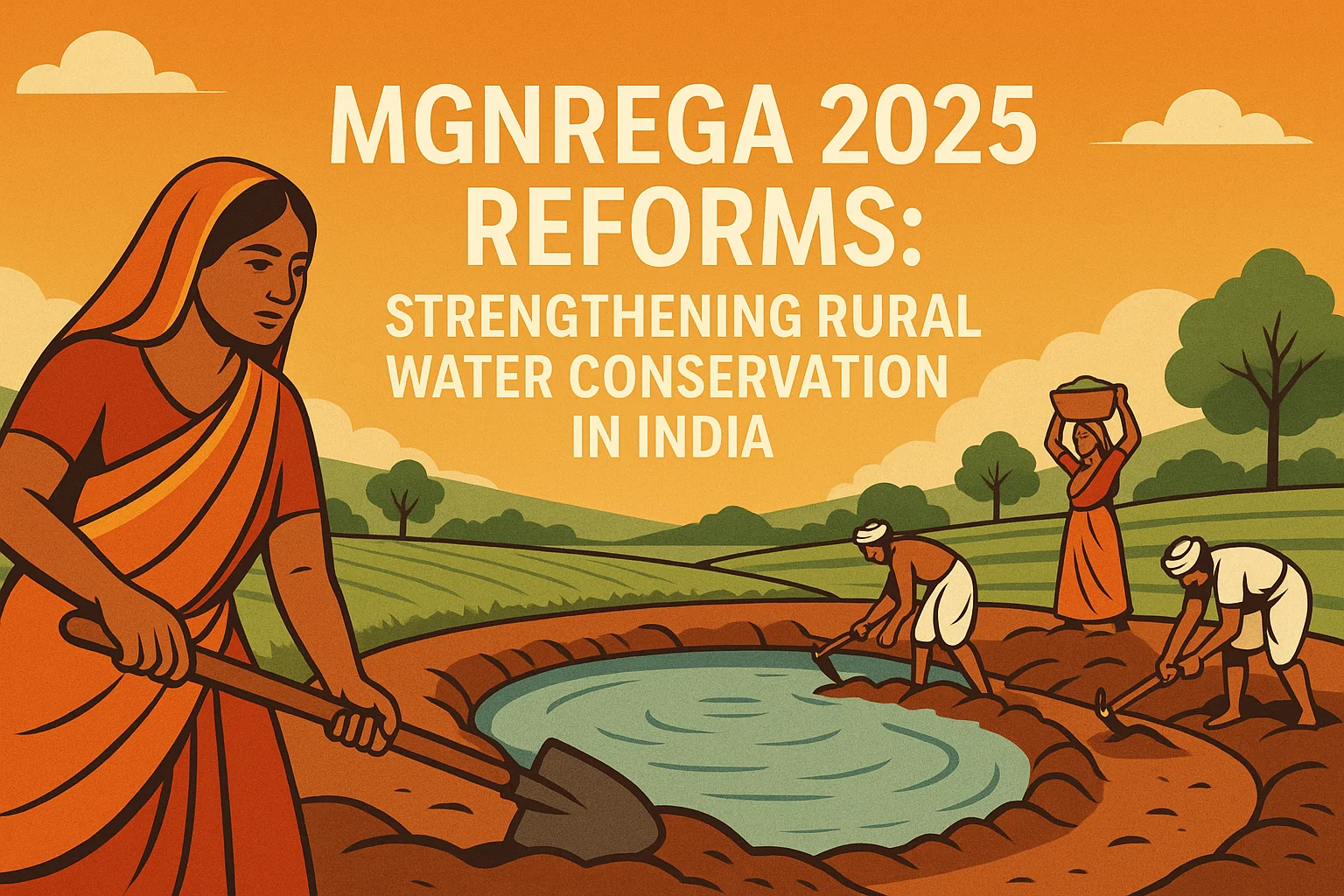NATPOLREX-X 2025: India’s Flagship Marine Pollution Response Exercise
Explore NATPOLREX-X, India’s flagship marine pollution response exercise. Learn about the 2025 drills off Chennai, international participation, shoreline cleanup, and Make in India initiatives strengthening coastal safety and environmental security.
Context
The Indian Coast Guard (ICG) conducted the 10th National Level Pollution Response Exercise (NATPOLREX-X) alongside the 27th National Oil Spill Disaster Contingency Plan (NOSDCP) meeting off the Chennai coast on 5–6 October 2025. This exercise is a key national initiative to strengthen India’s preparedness against marine pollution incidents, particularly oil spills, which pose significant risks to the environment, public health, and economic security.

Objective and Framework
NATPOLREX, held biennially under the National Oil Spill Disaster Contingency Plan (NOSDCP), 1993, serves as India’s flagship platform to evaluate operational readiness and enhance coordination among coastal states, port authorities, and oil industries.
Since 1986, the ICG has been designated as the Central Coordinating Authority for marine pollution response, operating through Pollution Response Centres located at Mumbai, Chennai, Vadinar, and Port Blair. These centres act as nerve centres for emergency response, resource mobilisation, and inter-agency coordination during oil spill incidents.
NATPOLREX exercises are designed to:
-
Test the effectiveness of existing response plans.
-
Strengthen inter-agency coordination, including state maritime authorities, port officials, and oil companies.
-
Evaluate logistical and operational preparedness to contain spills and minimise environmental impact.
Key Features of NATPOLREX-X 2025
The 2025 edition of NATPOLREX introduced several notable advancements:
-
International and National Participation:
-
Over 105 national delegates participated alongside 40 foreign observers representing 32 countries, reflecting India’s commitment to international collaboration in marine pollution management.
-
-
Shoreline Cleanup Drill:
-
For the first time, a shoreline cleanup exercise at Marina Beach was conducted, assessing local-level preparedness and community involvement in mitigating pollution on public beaches.
-
-
Indigenous Assets and ‘Make in India’:
-
The exercise highlighted indigenously developed pollution response equipment, reinforcing India’s self-reliance in marine disaster management technologies.
-
-
Simulation of Realistic Scenarios:
-
Scenarios included offshore oil spills, containment operations, and coordinated response exercises, testing rapid deployment and decision-making under crisis conditions.
-
Significance of NATPOLREX-X
India imports approximately 75% of its crude oil via maritime routes (Ministry of Petroleum and Natural Gas, 2024). Consequently, marine oil spills pose a direct threat not only to the environment but also to strategic energy security. NATPOLREX-X strengthens India’s ability to protect its coastline, marine biodiversity, and economic assets linked to ports and fisheries.
Key dimensions of its significance include:
-
Environmental Protection:
-
Reinforces India’s commitments under MARPOL 73/78, the international convention for the prevention of marine pollution, and SACEP (South Asia Cooperative Environment Programme), promoting regional ecological security.
-
-
Strategic Preparedness:
-
Ensures rapid response capability for oil spills near critical ports and shipping lanes, safeguarding energy supply chains.
-
-
Capacity Building and Self-Reliance:
-
Demonstrates Make in India initiatives in pollution response technologies, supporting domestic innovation in marine safety equipment.
-
-
Global Collaboration:
-
Engaging foreign observers fosters the exchange of best practices, technological expertise, and harmonisation of response protocols at an international level.
-
Conclusion
NATPOLREX-X exemplifies India’s proactive approach to marine environmental security. By combining domestic capability, international collaboration, and community-level preparedness, the exercise ensures that India is equipped to tackle oil spills effectively. As maritime trade and energy imports continue to grow, regular exercises like NATPOLREX are crucial to maintaining a resilient and sustainable coastal ecosystem, protecting both economic and environmental interests.
Subscribe to our Youtube Channel for more Valuable Content – TheStudyias
Download the App to Subscribe to our Courses – Thestudyias
The Source’s Authority and Ownership of the Article is Claimed By THE STUDY IAS BY MANIKANT SINGH




